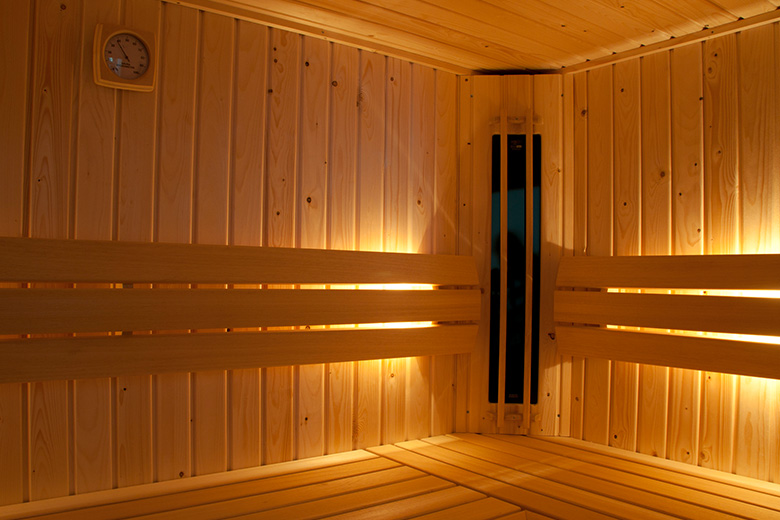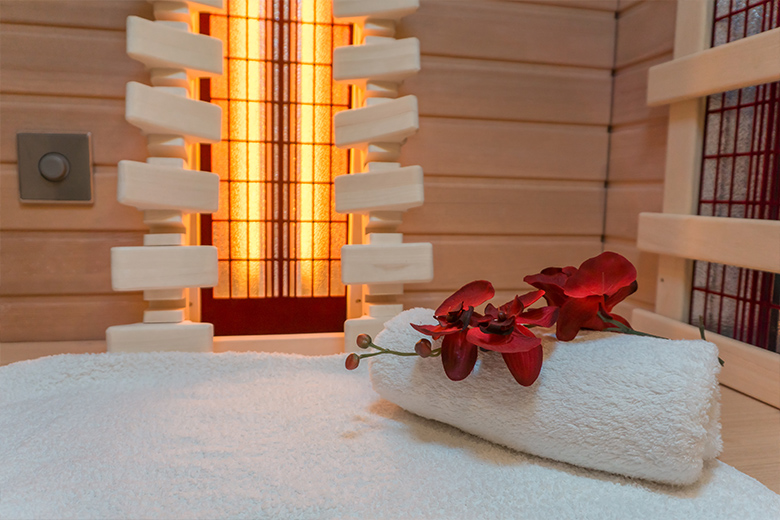Infrared Saunas
Infrared Saunas
An infrared sauna is a type of sauna that uses infrared heaters to emit infrared radiant heat, which is absorbed by the body directly. Unlike traditional saunas that heat the air around you, infrared saunas use infrared wavelengths to penetrate the body’s tissues and create a deep heating effect.
The infrared heaters in an infrared sauna produce electromagnetic radiation in the form of infrared waves. These waves penetrate the body, causing the body’s temperature to rise, promoting sweating and providing various health benefits.
There are three types of infrared waves used in infrared saunas: near-infrared, mid-infrared, and far- infrared. Each type of wave has different properties and benefits. Near-infrared waves have shorter wavelengths and are believed to promote skin rejuvenation, wound healing, and cell health. Mid- infrared waves penetrate deeper into the body and can help with pain relief and improved circulation. Far-infrared waves penetrate the deepest and are oXen associated with detoxification, relaxation, and improved cardiovascular health.

Differences between Infrared and Regular Sauna Heaters:
- Heat Source: The primary difference between regular saunas and infrared saunas lies in the way they generate heat. Traditional saunas use various heating elements like electric stoves, wood burners, or gas heaters to heat the air inside the sauna room. In contrast, infrared saunas use infrared heaters that emit infrared rays directly onto the body, without significantly heating the surrounding air.
- Penetration: Infrared saunas are designed to emit infrared rays that can penetrate deeper into the body compared to regular saunas. This deeper penetration is believed to provide more intense therapeutic benefits, as the heat can reach tissues, muscles, and even organs.
- Temperature and Humidity: Regular saunas typically operate at higher temperatures, ranging from 70°C to 100°C (158°F to 212°F), with lower humidity levels. Infrared saunas operate at lower temperatures, usually between 45°C to 60°C (113°F to 140°F), but can still induce significant sweating due to the direct heat transfer to the body.
- Energy Efficiency: Infrared saunas are oXen considered more energy-efficient than regular saunas. They require less power to heat up since they directly warm the body instead of heating the entire sauna room. This energy efficiency can make infrared saunas a more cost-effective option in the long run.
- Heating Time: Regular saunas generally take longer to heat up compared to infrared saunas. Infrared saunas can reach operating temperatures more quickly, allowing users to start their sessions sooner.
Both regular and infrared saunas offer unique benefits, and the choice between them oXen comes down to personal preference and desired therapeutic effects. It’s important to consider your individual needs and consult with a healthcare professional before incorporating sauna use into your wellness routine.
We do custom installations for both traditional and infrared saunas. Email us floor plans to get a quote!


Contact Us

